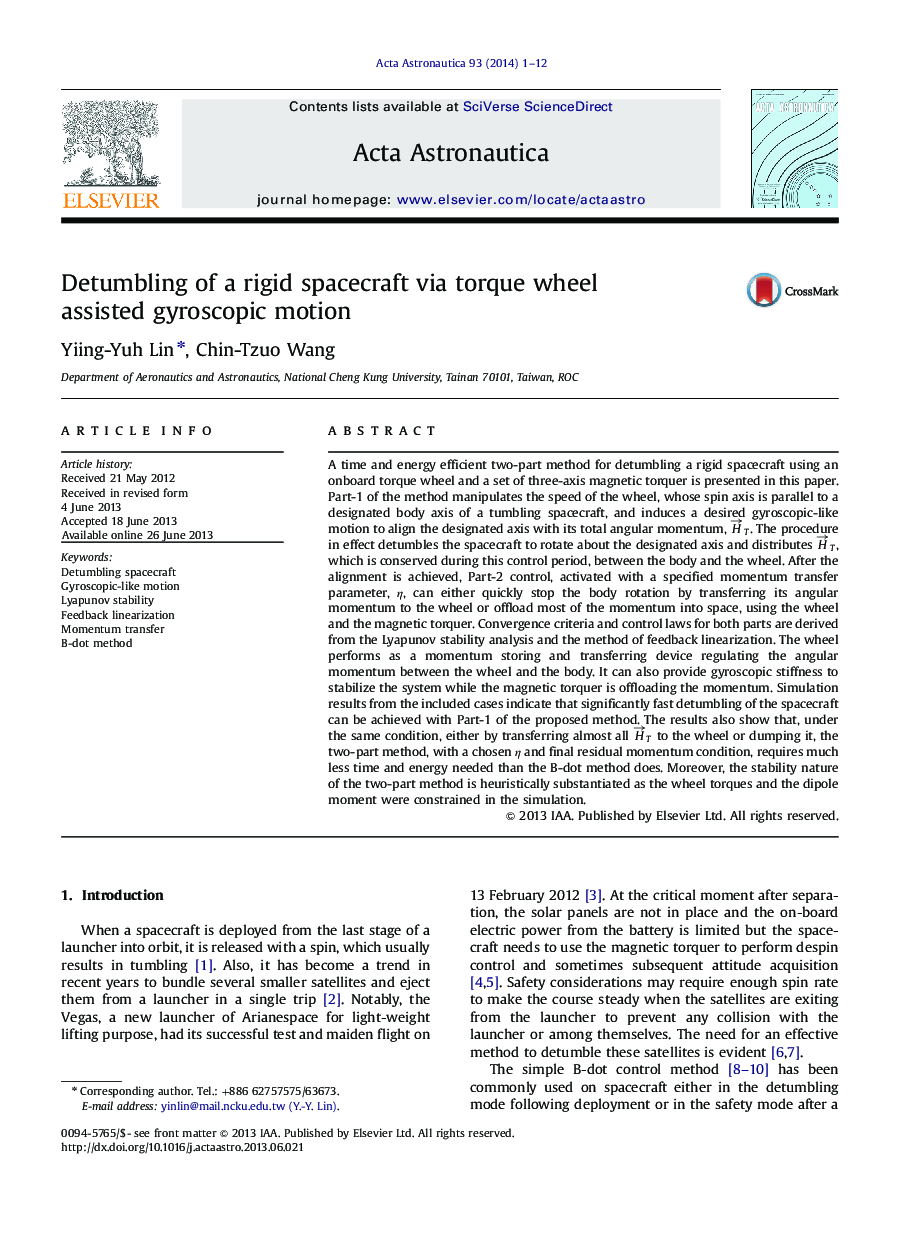| کد مقاله | کد نشریه | سال انتشار | مقاله انگلیسی | نسخه تمام متن |
|---|---|---|---|---|
| 1714858 | 1519958 | 2014 | 12 صفحه PDF | دانلود رایگان |
A time and energy efficient two-part method for detumbling a rigid spacecraft using an onboard torque wheel and a set of three-axis magnetic torquer is presented in this paper. Part-1 of the method manipulates the speed of the wheel, whose spin axis is parallel to a designated body axis of a tumbling spacecraft, and induces a desired gyroscopic-like motion to align the designated axis with its total angular momentum, H→T. The procedure in effect detumbles the spacecraft to rotate about the designated axis and distributes H→T, which is conserved during this control period, between the body and the wheel. After the alignment is achieved, Part-2 control, activated with a specified momentum transfer parameter, ηη, can either quickly stop the body rotation by transferring its angular momentum to the wheel or offload most of the momentum into space, using the wheel and the magnetic torquer. Convergence criteria and control laws for both parts are derived from the Lyapunov stability analysis and the method of feedback linearization. The wheel performs as a momentum storing and transferring device regulating the angular momentum between the wheel and the body. It can also provide gyroscopic stiffness to stabilize the system while the magnetic torquer is offloading the momentum. Simulation results from the included cases indicate that significantly fast detumbling of the spacecraft can be achieved with Part-1 of the proposed method. The results also show that, under the same condition, either by transferring almost all H→T to the wheel or dumping it, the two-part method, with a chosen ηη and final residual momentum condition, requires much less time and energy needed than the B-dot method does. Moreover, the stability nature of the two-part method is heuristically substantiated as the wheel torques and the dipole moment were constrained in the simulation.
Journal: Acta Astronautica - Volume 93, January 2014, Pages 1–12
